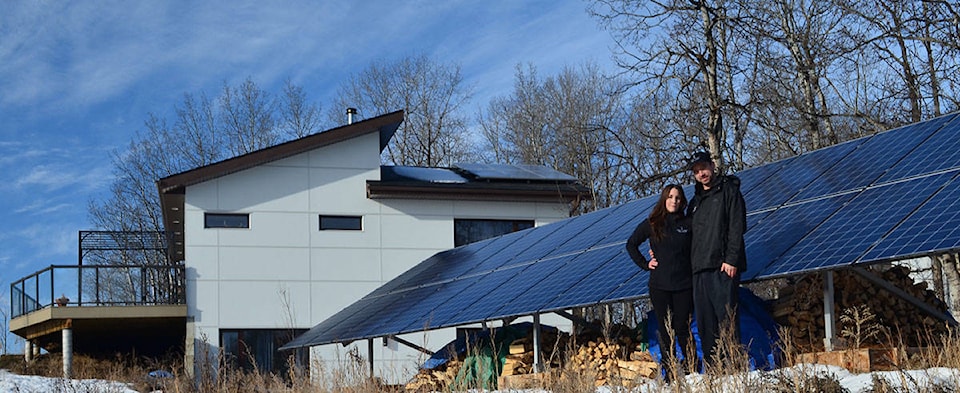How much would you save if you didn’t have to pay for energy for your home every month?
A home in Lacombe County is central Alberta’s first “damn-near” passive solar net zero home.
Chelsah Thomas, who built the house along with her husband, Jesse, explained a net zero home generates as much energy as it consumes over the course of a year. Located just outside of Blackfalds, the home uses solar energy to passively heat itself, has solar panels, along with other forms of energy, and an off-grid and a grid-tied system.
“So we technically don’t pay any energy bills,” she said Tuesday.
The house is designed to capture passive solar heat or “free heat.” Net zero homes are constructed as high-performance homes, heated electrically and powered by solar energy.
As of 2018, Alberta had three certified passive homes, and some other uncertified ones, the wife and mother confirmed.
The Thomas house, constructed last year, was built using the principles of a passive house. The high-performance home did not meet the stringent requirements, however, and remains uncertified, and is being considered a “damn-near passive house.”
Thomas, 34, explained her house produces more energy in the summer than in winter. This means the family earns credits in the summer months from its utility provider, and pays for energy in winters, which evens out the costs over the course of the year.
The Sol Invictus Energy Services co-owner said Alberta and Sasktachewan use the most energy to heat their homes in all of Canada, based on numbers from Statistics Canada.
In Red Deer, energy efficiency programs are becoming more popular due to funding and grants available from the government of Alberta, said Thomas.
A report from Energy Efficiency Alberta in October confirmed central Albertans are embracing energy efficiency programs. Red Deer had one of the highest per capita participation rates in the Residential No-Charge Energy Savings program, with one out of every 10 homes (a total of 4,778 residences) taking advantage.
The city was one of the top communities in Alberta for participation in home improvement and online incentives, with 285 participants adding insulation, replacing windows, opting for drain water heat recovery or installing a tankless hot water heater.
Home owners wondering about their usage and how it compares to others can go to myheat.ca and type in their address. The map shows potential heat loss and provides a heat rating compared to other homes in the neighbourhood.
Thomas, a certified energy advisor through Natural Resources Canada, advises people to install LED lights, have short showers, wash clothing with cold water and install window shading and air sealing to start saving on energy bills. Those who are buying a home or renovating can add insulation in walls, ceilings and floors, install triple pane windows, and replace old appliances with high-efficiency models.
